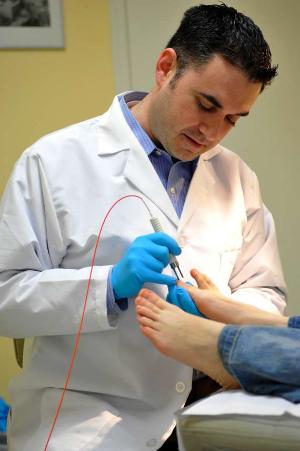Other than controlling the craving to eat food items that are high in sugar content and regularly taking medicine for diabetes, there are a lot of other lifestyle modifications diabetics need to observe in order to keep healthy. One of these is foot care.
Because of the sluggish blood flow, slowed healing process, and numbness of the appendages - especially the feet - caused by diabetes, those with this chronic condition will need to take greater care of their feet. Here are some of the pointers those with the disease or loved ones who have it will find valuable.
Don’t go barefoot
Although most people have footwear on during most of their waking moments, this isn’t the case when a person is in a place or situation where it’s either okay or more comfortable to go barefoot. Well, whatever these places are, wearing no footwear can easily injure one’s sole, and injuries for diabetics can lead to a handful of complications that could worsen when untreated. By simply wearing slippers or even harder footwear, the latter will save the diabetic from having to go through difficult, uncomfortable, and expensive procedures.
Have a podiatrist trim your toenails

An awful misstep can cause long toenails to become an ingrown nail, an injury that is difficult to treat. An injury like that can cause a lot of complications for the diabetic. Therefore, toenails must be regularly kept trimmed. However, doing it yourself is dangerous, for doing it wrong can cause the very thing you are trying to prevent. In order for that not to happen, leave it to a foot doctor, also known as a podiatrist. Being experts in the field, they know techniques and have specialized equipment that allows them to trim nails without any threat of wounds.
Make sure your shoes fit properly
Tight footwear can not only be uncomfortable, but also cut off blood circulation. And because of the numbness brought about by diabetic neuropathy, some patients do not feel that their shoes are too tight. Therefore, before putting on shoes, especially for long hours, make sure that it’s a perfect fit. In order to determine this, trace the outline of your foot and your shoe. If the shoe is a half-inch longer than your longest toe and just as wide as the foot, then it’s just right.
Wash your feet daily

Bacteria on the skin can infect your foot if you have a wound, so you should wash it daily. However, washing can also cause irritation and injury. To prevent that, certain precautions must be observed. First off, use mild soap and warm water. In order to check the temperature, use your elbow and not the foot, in case it might be too hot. Pat the skin dry, as wet surfaces can be breeding ground for fungi. Do not rub it, as doing so irritates the skin. And finally, Use lotion after washing to prevent cracking.
Your feet take you places both old and new. Don’t let diabetes take them and the privilege they give away from you - follow these steps.